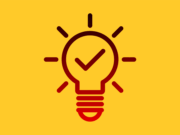The healthcare interoperability market is experiencing rapid growth. Precedence Research valued it at USD 3.94 billion in 2024. By 2034, it’s expected to reach USD 14.47 billion. That’s a compound annual growth rate of 13.89%.
Despite this momentum, most organizations stumble at a critical point. They build basic connectivity. What they actually need is true interoperability. The difference matters more than you might think.
Real EHR integration delivers measurable results. An AJMC study found it cuts treatment costs by nearly 10%. Patient outcomes improve as well. But there’s a catch. These benefits only materialize when systems can exchange data, interpret it, and act on it automatically.
This article explains what EHR integration means in practice. You’ll discover which technologies make it possible. You’ll also learn how to navigate the common obstacles that derail integration projects.
What is EHR Integration? Understanding Semantic Interoperability vs Basic Connectivity

Most organizations think they have EHR integration. But they only have basic connectivity. True integration needs semantic interoperability. This means systems can exchange, interpret, and act on data automatically. No manual work required. Organizations building healthcare software must understand this distinction early. When developing custom medtech software development solutions, choosing semantic interoperability over basic connectivity from the start prevents costly redesigns later.
EHR integration connects different electronic medical record systems. It enables meaningful data flow. Connectivity is simpler. Systems just send and receive data. They don’t understand it. Interoperability is more advanced. Systems exchange, interpret, and use data in a standardized way.
Three levels exist. Foundational means basic transmission. Structural means standardized format. Semantic means common understanding. True clinical value emerges only at the semantic level.
Here’s a common scenario. With connectivity alone, physicians receive lab results. But then the manual work begins. Finding critical values, interpreting numbers, and re-entering data into the patient chart takes time. This process introduces errors.
With true interoperability, results automatically populate the chart. Color-coded alerts appear. Trend analysis shows up. Documentation time drops significantly. Patient safety improves measurably.
EHR Integration Standards: HL7 vs FHIR and Which Technology to Choose

Successful EHR integration requires understanding three key technologies. Legacy HL7 v2 remains essential for existing connections. Modern FHIR provides flexibility through RESTful APIs for new applications. Each serves different integration needs.
HL7 v2 Standard: When to Use Legacy Healthcare Integration
HL7 v2 has been around since the 1980s. It handles billions of messages daily. It uses a pipe-delimited format for transactions. These include ADT (Admission, Discharge, Transfer), orders, and results.
The standard has proven reliability. This matters for mission-critical workflows. But it has limitations. Vendor implementations vary widely. This requires custom mapping. The format is difficult for modern developers. It doesn’t fit well with mobile apps and cloud platforms.
Use HL7 v2 when connecting to established legacy systems. Use it when migration costs exceed benefits. But plan a gradual FHIR transition for new integrations. Maintain existing connections while you transition.
HL7 FHIR Standard: Benefits of Modern Healthcare Interoperability
FHIR stands for Fast Healthcare Interoperability Resources. It uses modular resources as building blocks. These include Patient, Observation, and Medication. It’s built on RESTful API principles. It uses JSON or XML formats. Web developers already know these formats. This dramatically reduces implementation time.
FHIR adoption is growing fast. The State of FHIR survey shows that countries with FHIR regulations increased from 65% in 2024 to 73% in 2025. Major EHR vendors now provide FHIR APIs. These include Epic, Cerner, and Allscripts.
Use cases are diverse. Patient access apps use FHIR. So do population health analytics tools. Clinical decision support systems also use it. For any new integration project without legacy constraints, choose FHIR.
EHR Integration Architecture: Point-to-Point, ESB, and HIE Patterns
Organizations use three main integration patterns. Point-to-point works for simple connections. It links two systems. But it doesn’t scale well.
Enterprise Service Bus (ESB) creates a centralized hub for complex environments. This pattern handles routing and transformation efficiently.
Health Information Exchanges (HIEs) enable data sharing across organizational boundaries. These can operate at regional or national levels.
Security requirements are critical. OAuth 2.0 and SMART on FHIR handle authorization. End-to-end encryption protects data in transit and at rest. Comprehensive audit logging tracks all access. These measures are non-negotiable.
EHR Integration ROI: Cost Savings, Quality Improvements, and Efficiency Gains

EHR integration delivers clear ROI. Research published in AJMC shows that patients in hospitals with advanced EHR systems cost 9.66% less to treat. These savings come from three areas.
Clinical quality improvements emerge as the first major benefit. Comprehensive patient views give clinicians complete information. This reduces medical errors during treatment decisions. Real-time alerts catch dangerous drug interactions before they reach patients. Clinical decision support systems guide evidence-based treatment choices. Patient portals enhance treatment adherence by keeping patients engaged. Remote monitoring capabilities help prevent hospital readmissions by catching problems early.
Operational efficiency gains materialize immediately after implementation. E-prescribing streamlines medication orders and reduces pharmacy callbacks. Automated scheduling systems decrease no-show rates. This makes better use of clinical capacity. Organizations eliminate duplicate testing through shared results. They save money while reducing unnecessary burden on patients. Integration also cuts manual data entry time significantly. Physicians spend less time on documentation and more time with patients.
Financial returns prove substantial across multiple areas. Unnecessary testing drops significantly when clinicians have access to existing results. Better care coordination shortens hospital length of stay. This reduces costs while improving patient satisfaction. Preventing adverse events helps organizations avoid expensive complications. It also reduces treatment costs that impact both budgets and outcomes.
Long-term strategic value extends well beyond immediate cost savings. Value-based care contracts depend on integrated data. They use it to calculate quality metrics and adjust for patient risk. Population health management programs need complete patient information across multiple care settings. This helps identify high-risk individuals. Integration makes risk stratification possible. It supports the quality reporting requirements that determine success in emerging payment models.
EHR Integration Challenges: How to Overcome Legacy Systems and Data Quality Issues

Three barriers derail most EHR integration projects. Technical debt from legacy infrastructure causes problems. So does poor data quality. Alert fatigue also creates issues. These account for most failed implementations.
Legacy EHR Systems: Integration Strategies and Migration Approaches
Legacy systems integration is hard. Proprietary data formats often lack documentation. Limited API capabilities require custom development. Data gets trapped in silos. These use incompatible technologies. They don’t communicate easily.
Mitigation strategies help. Deploy middleware like Mirth Connect. This creates abstraction layers. Use gradual migration. Avoid “big bang” replacements. Wrap legacy systems with modern APIs. Don’t force immediate replacement.
EHR Data Quality: Patient Matching and Master Data Management Solutions
Common problems exist. Incomplete patient records create gaps in clinical information. Formats are inconsistent between systems. Duplicate patient records are widespread across the industry. This creates patient safety risks and billing errors.
Solutions exist, too. Master data management platforms help. They use probabilistic matching algorithms. Data validation rules at the point of entry prevent bad data. Regular quality audits catch problems. Patient identity management solutions maintain a single source of truth for demographics.
EHR Alert Fatigue: Reducing Clinical Burnout and Improving Usability
Clinicians face too many alerts. Override rates are extremely high. The AMA (American Medical Association) identifies alert fatigue as a major EHR safety challenge. It’s one of seven key usability and safety problems.
EHR systems also suffer from poor usability design. Emergency physicians perform thousands of clicks in the system during their shifts. Documentation burden consumes a significant portion of physician time. This reduces the time available for direct patient care.
Solutions help. Machine learning algorithms prioritize alerts. They consider context and patient-specific risk. Role-based customization works too. Different clinician types see different alerts. Dedicated clinical informaticist teams bridge IT and clinical staff. They optimize workflows continuously.
EHR Integration Compliance: HIPAA, GDPR, and European Health Data Space Requirements

EHR integration crosses regulatory boundaries. Each has distinct rules. HIPAA governs US healthcare data. GDPR protects EU patient rights. The European Health Data Space (EHDS) mandates technical standards. These start in 2025-2026.
HIPAA Compliance for EHR Integration: Privacy and Security Rules
HIPAA includes three core rules: the Privacy Rule restricts PHI (Protected Health Information) access, the Security Rule mandates safeguards, and the Breach Notification Rule requires 60-day notification for breaches affecting 500+ individuals. Key requirements include Business Associate Agreements (BAA) with vendors, audit controls, and end-to-end encryption.
GDPR and EHR Data: European Healthcare Privacy Requirements
GDPR classifies health data as a special category requiring a lawful basis for processing. Key principles include data minimization (collecting only what’s necessary) and purpose limitation (preventing data repurposing without a new legal basis). Cross-border transfers require adequacy decisions or Standard Contractual Clauses (SCC). Data Protection Impact Assessments (DPIA) are mandatory for high-risk processing.
European Health Data Space (EHDS): Cross-Border EHR Integration Standards
The EHDS launches in phases beginning in 2025-2026. It enables cross-border health data sharing across EU member states. Technical requirements include the European Electronic Health Record Exchange Format (EEHRxF), mandatory FHIR-based specifications, and integration with MyHealth@EU infrastructure. Healthcare providers and EHR vendors should develop compliance roadmaps now.
EHR Integration Governance: Best Practices for Compliance and Security
Sustainable compliance requires dedicated privacy officers, compliance teams, clear data stewardship frameworks, and regular staff training. Essential technical controls include formal change management, security testing before deployment, incident response plans, and quarterly audits. Vendor management demands comprehensive due diligence, ongoing risk assessments, explicit compliance terms in contracts, and rights to audit vendor reports.
Conclusion

EHR integration enables healthcare digital transformation. Success requires understanding both technical implementation around standards like FHIR and strategic value drivers, including quality, efficiency, and cost reduction. The critical distinction is simple: focus on semantic interoperability rather than basic connectivity, which doesn’t deliver clinical value.
Start by auditing your current integration state. Do you have connectivity or true interoperability? Identify gaps in data exchange. Find clinical workflows that remain manual.
Develop a strategic roadmap. Align integration investments with business goals. Prioritize projects with measurable ROI across quality metrics, efficiency gains, and cost reduction.
In the era of value-based care, integration matters. Organizations without robust EHR integration face a competitive disadvantage. This disadvantage is increasing. Investment in proper integration infrastructure is strategic. Proper infrastructure differentiates your organization, enables better care, creates operational excellence, and drives sustainable financial performance.






